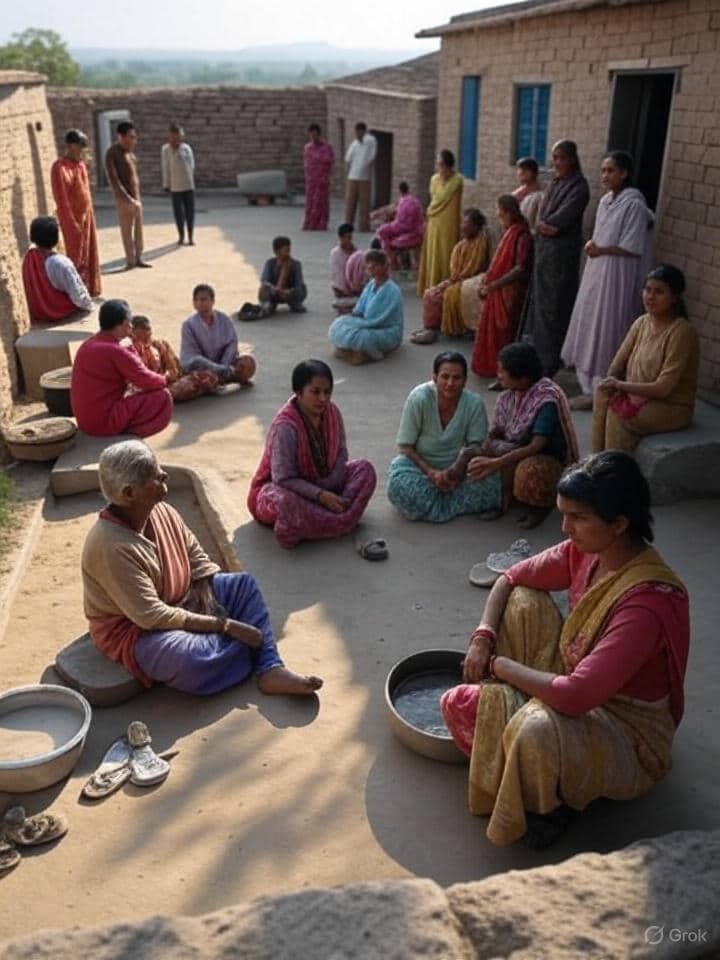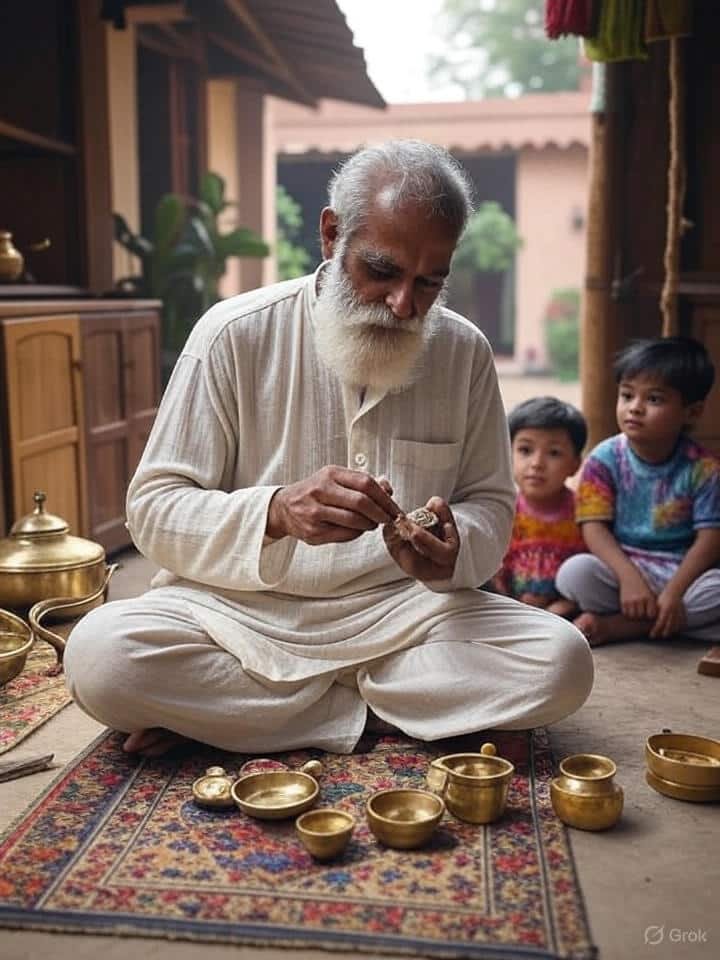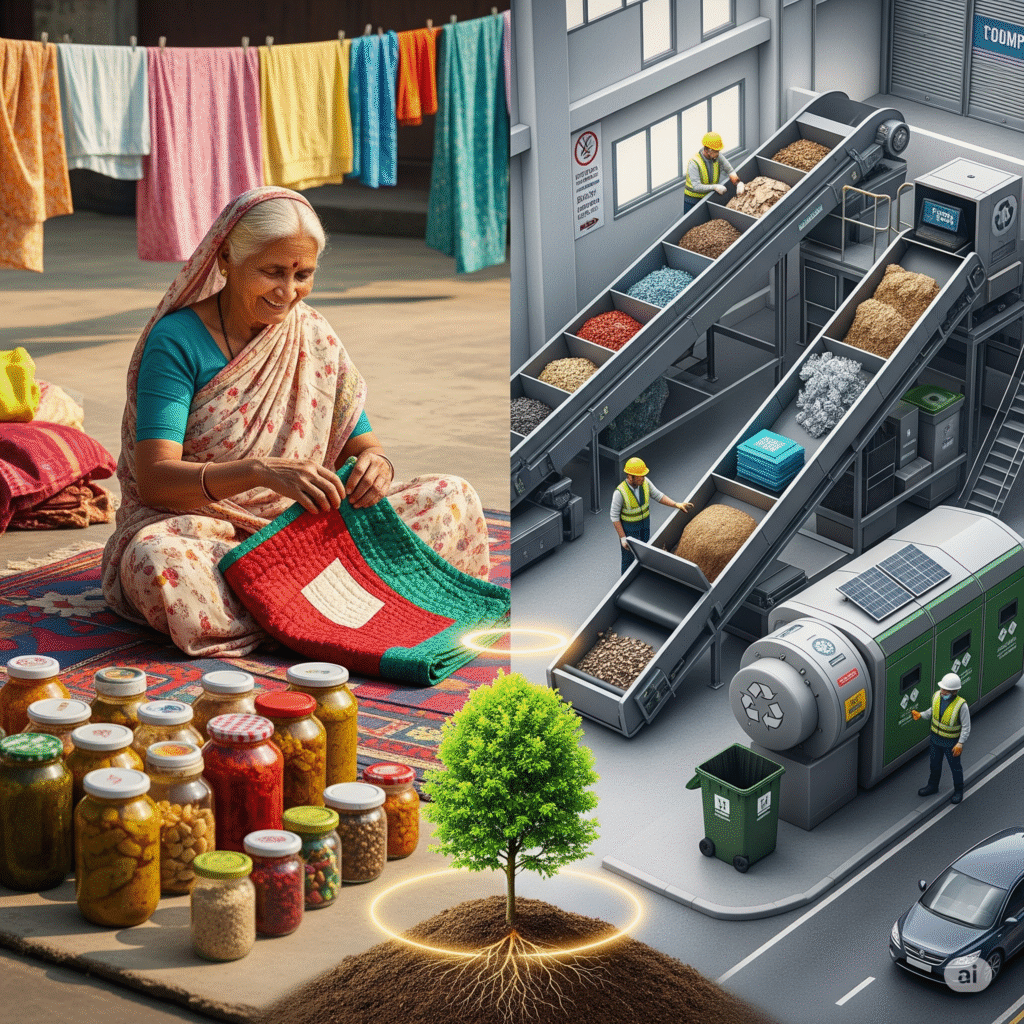Before Zero-Waste Was Trendy: What the West Can Learn from India’s Scarcity-Born Sustainability
Zero-waste may sound like a modern movement born in eco-conscious coffee shops and sustainability workshops, but for millions of Indians, it has always been a way of life. Long before hashtags, reusable straws, or eco-friendly influencers, Indian households practiced frugality, reuse, and recycling—not out of fashion, but out of necessity.
What the West now celebrates as minimalist living was, for generations of Indians, simply common sense. Scarcity shaped habits, culture embedded thrift, and communities passed down ingenious methods of reducing waste. Today, as the world grapples with climate change and overflowing landfills, these scarcity-born practices offer timeless lessons.
Ad Placeholder #1

From Scarcity to Sustainability: The Indian Context
India’s relationship with resources has historically been shaped not only by scarcity but also by its vast middle class—families with limited means yet strong social structures. Even those living in modest mud homes or makeshift shelters often manage to hold families together, send children to school, and build lives with dignity. In contrast, in much of the Western world, the absence of a permanent home often translates directly to homelessness and social exclusion.
In India, being resourceful is not optional; it is essential. A family that fails to stretch its resources, risks slipping quickly into deeper poverty. For centuries, this necessity has guided everyday practices. A sari wasn’t just clothing; when worn out, it became a quilt or a cleaning rag. Cooking wasn’t simply about flavor; it was about ensuring every grain and vegetable part found use.
This wasn’t sustainability as an intellectual choice—it was survival. And yet, from this necessity, Indians evolved a culture of resourcefulness that is now deeply relevant to today’s global sustainability conversation.
The Generational Wisdom of “Nothing Goes to Waste”

Ask any Indian grandparent about waste, and you’ll likely hear some version of: “Why throw it when it can be used again?” That philosophy guided everyday life.
- Kitchen Ingenuity: Leftover rice transformed into breakfast dishes. Vegetable peels turned into chutneys. Even mango seeds were dried and used in dals.
- Clothing Cycles: A father’s shirt became a child’s school uniform, then a household duster.
- Furniture Longevity: Wooden cupboards, steel utensils, and brass vessels lasted decades, often handed down across generations.
- Repair over Replace: From cobblers to tailors to utensil-fixers, local repair ecosystems thrived, ensuring things weren’t discarded at the first sign of wear.
What’s marketed today in the West as circular economy was simply life in Indian homes.
Ad Placeholder #2
“Reuse, Repair, Recycle” Before It Was a Slogan
The modern zero-waste mantra—reduce, reuse, recycle—reads like a checklist of traditional Indian practices.
- Reduce: Indians cooked only what was needed, often shopping daily for fresh produce. Bulk buying and overstocking—common in the West—was rare.
- Reuse: Glass jars from ghee were repurposed for pickles. Old saris became grocery bags long before “tote bags” became fashionable.
- Recycle: Waste segregation wasn’t a campaign; kabadiwalas (scrap dealers) bought old newspapers, bottles, and metal, recycling them into new products.
In short, India lived the mantra before it had a catchy acronym.

The Cultural Value of Thrift
Beyond necessity, Indian culture celebrated simplicity. The idea of jugaad—creative problem-solving with minimal resources—became a cultural badge of honor. Being thrifty wasn’t a sign of poverty; it was seen as intelligence and respect for resources.
Festivals like Diwali or Pongal exemplify this. Decorations were handmade from natural materials—rangolis from rice flour, lamps from clay, garlands from flowers. Disposable plastics had no place in traditional celebrations.
This deep cultural embedding of thrift ensured that resource-consciousness wasn’t just practical but also emotional.
Why the West Should Pay Attention

The modern West faces a paradox: abundance has bred excess. From fast fashion to single-use plastics, convenience has trumped sustainability. Wastefulness became normalized. Now, as environmental urgency grows, there’s a scramble to learn how to live with less.
Here’s where India’s generational wisdom becomes valuable:
- Scarcity Shapes Creativity
The West often views sustainability as a sacrifice—giving up convenience. India shows that scarcity-inspired creativity can make reuse fun, innovative, and meaningful. - Community-Centric Living
In many Indian neighborhoods, sharing wasn’t optional. Tools, utensils, or even meals were exchanged freely. For the West, where hyper-individualism dominates, reviving community-based living could be transformative. - Longevity over Convenience
While disposable culture grew in the West, Indian households valued durability. Steel tiffins and glass bottles were preferred over plastic not for environmental reasons, but because they lasted. Longevity naturally meant less waste.
Everyday Indian Practices That Can Inspire the West
Let’s bring this wisdom into modern relevance. Here are simple practices from Indian households that Western lifestyles could adapt:
- Cloth Bags & Containers: Before supermarkets, Indians carried cloth bags and steel containers to buy grains or oil. Today, this reduces plastic packaging.
- Composting at Home: Vegetable peels weren’t just trash—they enriched backyard soil. Even in urban apartments, composting bins bring this back.
- Repair Economies: Instead of replacing appliances, nurturing repair shops sustains local economies while reducing landfill waste.
- Mindful Eating: Serving small portions, eating together, and reusing leftovers reduces food waste significantly.
- Hand-Me-Downs: Children’s clothes and toys were naturally shared across families. It wasn’t stigma; it was love extended across generations.
Sustainability Is Not a Trend, It’s Memory
For India, sustainability isn’t something new to be adopted—it’s something to be remembered. The challenge is that as India modernizes, many of these practices are being lost in favor of convenience-driven lifestyles. Ironically, at the same time, the West is paying premium prices to rediscover them.
Organic cloth bags, bamboo toothbrushes, and stainless-steel lunch boxes are marketed as eco-friendly products in the US—but they were everyday objects in Indian households decades ago. What’s sold today as innovation is often reinvention.
Building Bridges: East Meets West in Sustainability - Closing Thoughts
The West can learn humility and practicality from India’s past, while India can learn modern systems of scalability from the West. Together, there’s a balance to be struck:
- India’s Lessons: Generational practices, community reuse, cultural thrift.
- West’s Lessons: Policy enforcement, scalable waste-management infrastructure, and technological innovation.
By combining grassroots cultural wisdom with systemic frameworks, both regions can accelerate the zero-waste journey.
When the West talks about zero-waste today, it often feels like a revolution. But for millions of Indians, it feels like nostalgia. The sari-turned-quilt, the pickle-jar from an old bottle, the shared neighborhood toolshed—all remind us that sustainability is not a new trend but a way of life perfected in times of scarcity.
As climate challenges grow urgent, it’s worth remembering: the answers to our future often lie in the wisdom of the past. And India’s generational culture of waste-free living may just be the blueprint the world needs.

Ad Placeholder #3
